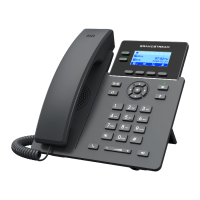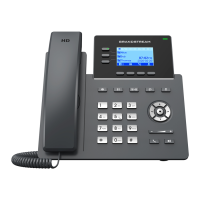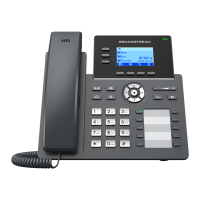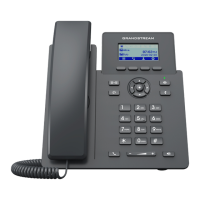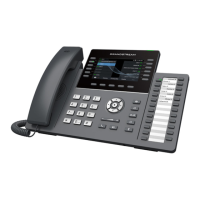GRP260x Administration Guide
Version 1.0.1.18
If Yes except REGISTER, the SIP messages for register or unregister will
not contain MAC address in the User-Agent header, and all the other
outgoing SIP messages will attach MAC address to the User-Agent header;
If Yes to ALL, all the outgoing SIP messages will attach MAC address to the
User-Agent header; If No, MAC address will not be attached to the User-
Agent header for any outgoing SIP message.
Determines the network protocol used for the SIP transport. Users can
choose from TCP, UDP and TLS. The default setting is “UDP”.
Determines whether to listen to multiple SIP protocols.
• Transport Only: will listen to configured transport protocol only.
• Dual: will listen to TCP when UDP is selected.
• Dual (Secured): will listen to TLS/TCP when UDP is selected. If TCP or
TLS/TCP is selected, UDP will be listened to
• Dual (BLF Enforced): will try to enforce BLF subscriptions to use TCP
protocol by adding 'transport=tcp' to the Contact header.
The default setting is “Transport Only”.
Defines the local SIP port used to listen and transmit.
SIP URI Scheme when
using TLS
Specifies if “sip” or “sips” will be used when TLS/TCP is selected for SIP
Transport. The default setting is “sips”.
Use Actual Ephemeral
Port in Contact with
TCP/TLS
This option is used to control the port information in the Via header and
Contact header. If set to No, these port numbers will use the permanent
listening port on the phone. Otherwise, they will use the ephemeral port for
the connection.
The default setting is “No”.
Defines whether SIP Instance ID is supported or not. Default setting is “Yes”.
SIP T1 Timeout is an estimate of the round-trip time of transactions between
a client and server. If no response is received the timeout is increased and
request re-transmit retries would continue until a maximum amount of time
define by T2. The default setting is 0.5 seconds.
SIP T2 Timeout is the maximum retransmit time of any SIP request
messages (excluding the INVITE message). The re-transmitting and
doubling of T1 continues until it reaches the T2 value. Default is 4 seconds.
The Outbound proxy mode is placed in the route header when sending SIP
messages, or they can be always sent to outbound proxy.
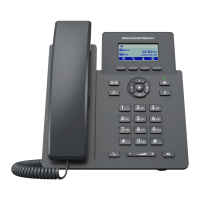
